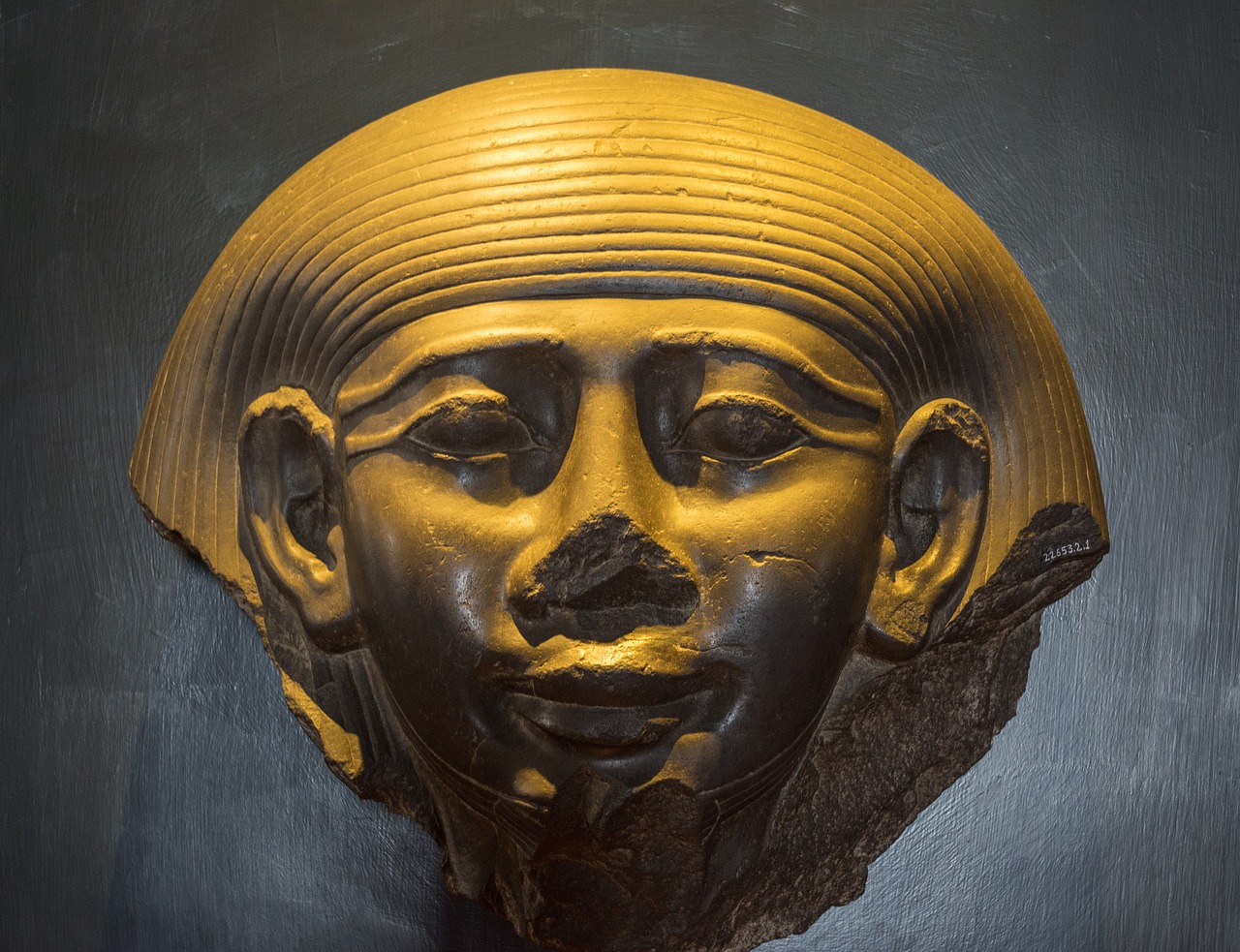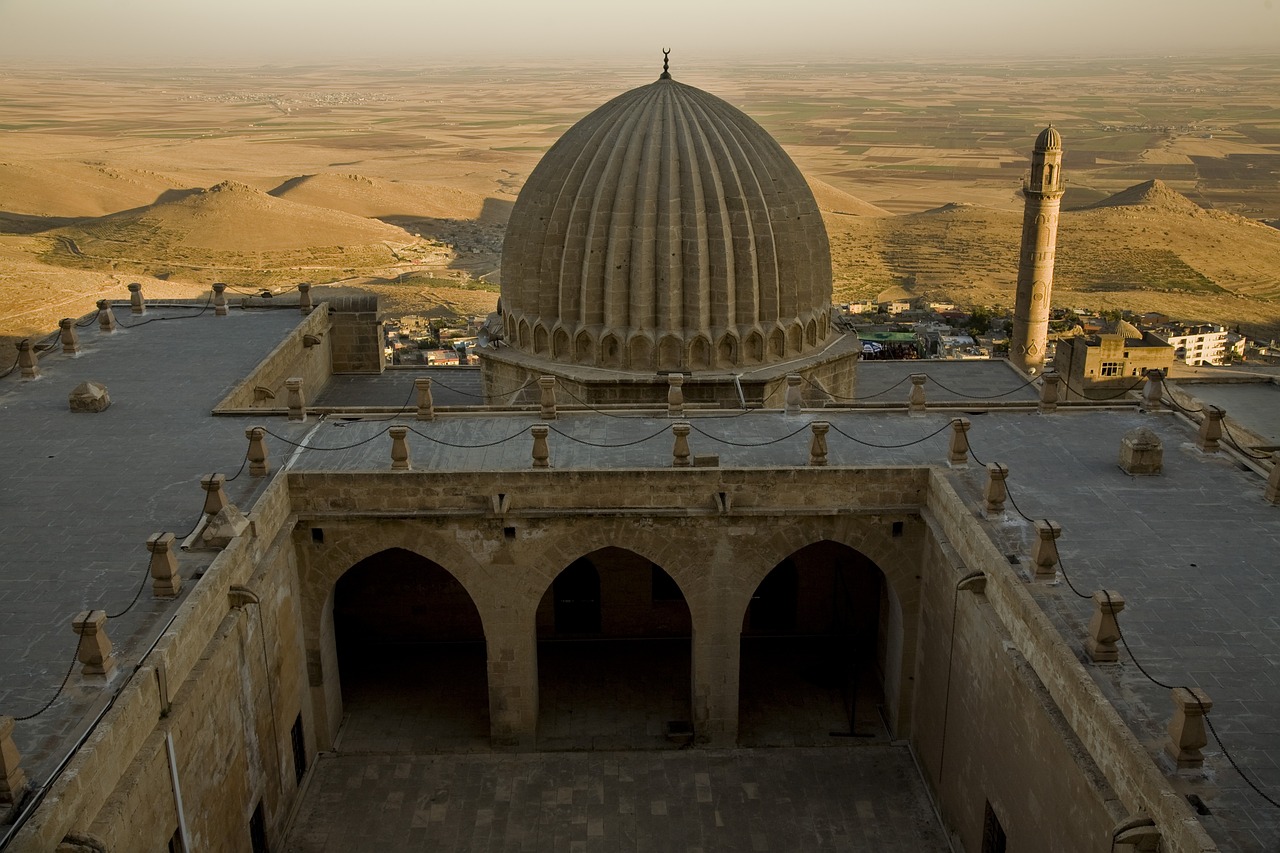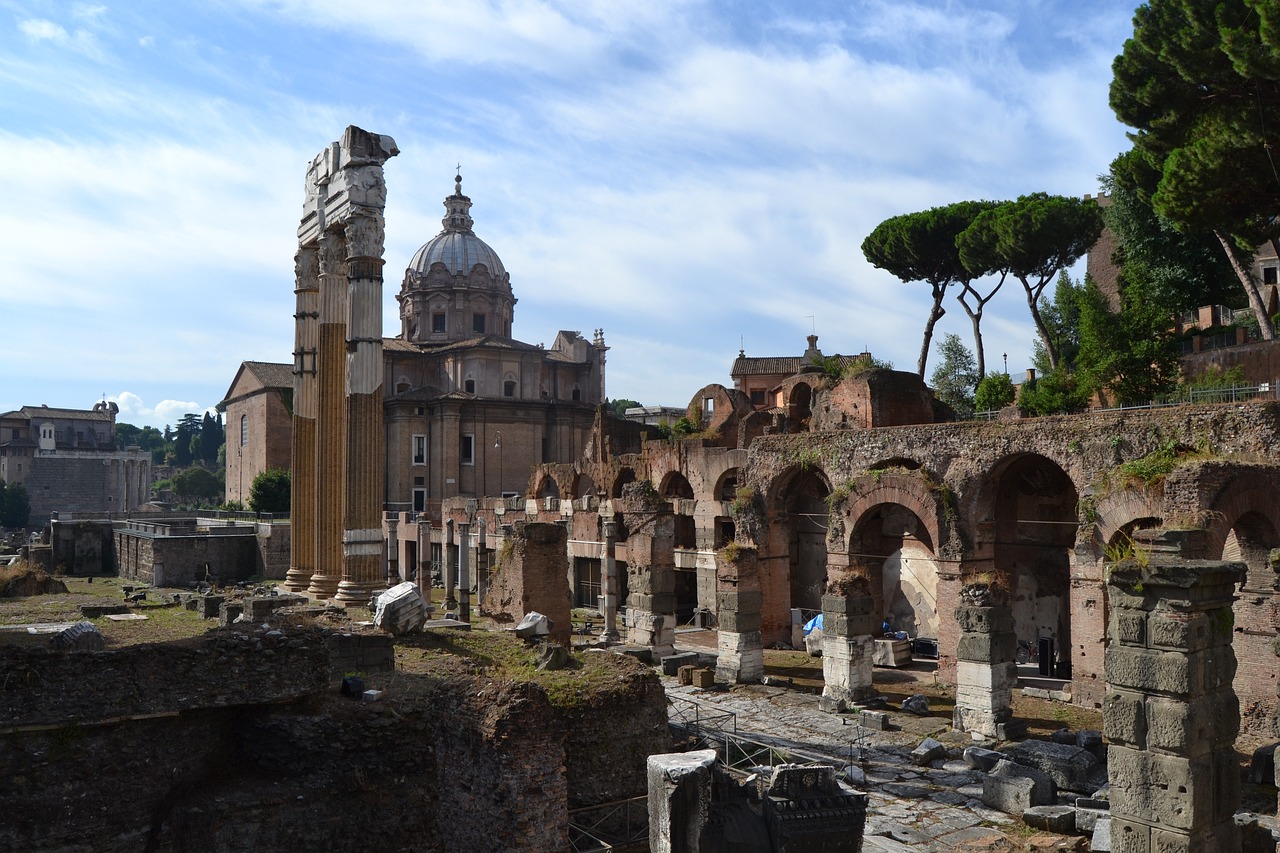The Legacy of Ancient Mesopotamian Civilizations
Exploring the rich history and lasting impact of the ancient Mesopotamian civilizations, including the Sumerians, Babylonians, and Assyrians, on modern society, culture, and technology.
Ancient Mesopotamia, often referred to as the "cradle of civilization," holds a significant place in history for its remarkable contributions that continue to shape our world today. The legacy of Mesopotamian civilizations, encompassing the Sumerians, Babylonians, and Assyrians, extends far beyond their time, leaving an indelible mark on modern society, culture, and technological advancements.
Through their innovative thinking and pioneering spirit, the Mesopotamians laid the groundwork for various aspects of our contemporary world. From their advanced architectural marvels to revolutionary legal and administrative systems, the ancient Mesopotamian societies set a precedent for future civilizations to follow.
One of the most striking features of Mesopotamian civilization was its architectural achievements. The towering ziggurats, intricate temples, and formidable city walls stand as testaments to their advanced engineering skills and urban planning prowess. These structures not only served practical purposes but also symbolized the grandeur and power of the ruling elite.
Moreover, the Mesopotamians were trailblazers in the realm of legal and administrative systems. The famous Code of Hammurabi, one of the earliest known written legal codes, provided a framework for justice and governance that influenced subsequent legal systems around the world. Their administrative structures laid the foundation for organized societies and efficient governance.
Technological innovations were also a hallmark of Mesopotamian civilization. The invention of writing systems, such as cuneiform, enabled the recording of history and knowledge dissemination. Their mastery of irrigation methods transformed arid lands into fertile agricultural hubs, ensuring food security and prosperity. Additionally, their mathematical concepts, including the development of the sexagesimal system, revolutionized numerical calculations and paved the way for scientific advancements.
Artistic and cultural contributions of the Mesopotamians further enriched their legacy. Intricate pottery, exquisite jewelry, and monumental sculptures adorned their cities, reflecting their religious beliefs and societal values. These artistic endeavors not only showcased their craftsmanship but also served as expressions of their spiritual and cultural identity.
Trade and commerce flourished in Mesopotamia, thanks to the strategic location of the region between major civilizations. Mesopotamian merchants established extensive trade networks that connected distant regions, facilitating the exchange of goods, ideas, and cultural practices. This vibrant trade ecosystem contributed to the cultural diversity and economic prosperity of the ancient world.
Religion played a central role in Mesopotamian society, with a complex pantheon of gods and goddesses shaping their worldview and societal structures. Rituals, myths, and religious practices permeated every aspect of life, providing a moral compass and a sense of order in a world filled with uncertainties.
In conclusion, the legacy of ancient Mesopotamian civilizations endures in various facets of modern society. Their influence can be seen in contemporary art, architecture, governance, and the enduring impact on global cultures and societies. By delving into the rich history of Mesopotamia, we gain a deeper appreciation for the foundations laid by these ancient civilizations, which continue to resonate in our world today.

Historical Significance
Exploring the rich history and lasting impact of the ancient Mesopotamian civilizations, including the Sumerians, Babylonians, and Assyrians, on modern society, culture, and technology.
Mesopotamia holds a pivotal place in history as one of the earliest cradles of civilization, laying the foundation for the development of complex societies. The region, situated between the Tigris and Euphrates rivers, witnessed the rise of city-states like Uruk and Ur, which flourished with advanced agricultural techniques and organized governance systems. Mesopotamia's strategic location facilitated cultural exchange and trade, influencing neighboring regions and future empires.

Architectural Marvels
When it comes to the architectural marvels of ancient Mesopotamian civilizations, one cannot help but be awestruck by the ingenuity and grandeur displayed in their constructions. The city-states of Mesopotamia, including the Sumerians, Babylonians, and Assyrians, left behind a legacy of impressive structures that continue to captivate historians and archaeologists to this day.
One of the most iconic architectural features of Mesopotamia is the ziggurat, a massive stepped pyramid typically serving as a temple complex. These imposing structures, such as the famous Ziggurat of Ur, were not only religious centers but also symbols of the power and wealth of the ruling elite. The intricate design and sheer size of these ziggurats stand as a testament to the advanced engineering skills of the Mesopotamians.
Furthermore, the city walls of Mesopotamian settlements were engineering marvels in their own right. Constructed with mud bricks and fortified with defensive towers, these walls were essential for protecting the city-states from external threats and invasions. The walls of Babylon, for instance, were renowned for their sheer size and strength, emphasizing the importance of fortifications in ancient urban planning.
In addition to ziggurats and city walls, Mesopotamian architecture also encompassed impressive temples dedicated to various gods and goddesses. These temples, such as the Temple of Marduk in Babylon, were not only places of worship but also centers of economic and political activity. The intricate carvings and decorative elements adorning these temples reflected the religious beliefs and cultural values of the Mesopotamian societies.
Overall, the architectural achievements of ancient Mesopotamian civilizations continue to inspire awe and admiration for their innovative designs, advanced construction techniques, and enduring legacy in shaping the urban landscape of the ancient world.

Legal and Administrative Systems
Legal and Administrative Systems in ancient Mesopotamia played a pivotal role in shaping the foundation of governance and justice systems that influence modern societies to this day. One of the most notable contributions was the development of the Code of Hammurabi, a comprehensive legal code that established rules and punishments for various offenses, promoting accountability and order within society. This code, inscribed on a stele, encompassed a wide range of laws covering areas such as property rights, marriage, and trade, reflecting the emphasis on justice and fairness in Mesopotamian society.
Moreover, Mesopotamia showcased advanced administrative structures that laid the groundwork for organized governance. City-states like Uruk and Ur had sophisticated bureaucracies responsible for managing resources, overseeing construction projects, and collecting taxes. Scribes played a crucial role in maintaining records and documentation, ensuring the smooth operation of administrative tasks. The efficient coordination of resources and labor within these city-states exemplified the early stages of centralized authority and governance.

Technological Innovations
Exploring the rich history and lasting impact of the ancient Mesopotamian civilizations, including the Sumerians, Babylonians, and Assyrians, on modern society, culture, and technology.
The ancient Mesopotamian civilizations were pioneers in various technological innovations that revolutionized human progress. One of the most significant contributions was the development of the first known writing system, known as cuneiform. This system, consisting of wedge-shaped symbols impressed on clay tablets, enabled the recording of laws, literature, and economic transactions, laying the foundation for written communication.
In addition to writing, Mesopotamians also excelled in irrigation methods, essential for agriculture in the region. They constructed intricate canal systems to control the flow of water from the Tigris and Euphrates rivers, allowing for efficient irrigation of crops and maximizing agricultural output. This technological advancement not only ensured food security but also supported the growth of urban centers.
Furthermore, Mesopotamians made significant strides in mathematical concepts, particularly in the development of a numerical system based on the sexagesimal (base 60) system. This system influenced the way we measure time, with 60 seconds in a minute and 60 minutes in an hour. Their mathematical innovations also extended to geometry, enabling the construction of architectural marvels like ziggurats with precision and accuracy.
Moreover, the Mesopotamians were skilled metallurgists, producing tools and weapons from bronze, an alloy of copper and tin. This technological expertise in metalworking not only improved the efficiency of agricultural practices and craftsmanship but also played a crucial role in military advancements, shaping the balance of power in the ancient world.

Artistic and Cultural Contributions
Artistic and Cultural Contributions of the ancient Mesopotamian civilizations are truly remarkable, showcasing their creativity and craftsmanship that still captivates us today. One of the most notable aspects of their artistic endeavors is the intricate pottery that they produced. Mesopotamian pottery was not just functional but also a form of artistic expression, adorned with intricate designs and patterns that reflected their cultural beliefs and aesthetic sensibilities.
Moreover, Mesopotamians were skilled jewelry makers, crafting exquisite pieces using materials like gold, silver, and precious stones. These jewelry pieces were not only symbols of wealth and status but also held religious significance, often featuring motifs inspired by their mythology and beliefs in gods and goddesses.
Another significant artistic contribution of the Mesopotamians was their monumental sculptures. These sculptures, often depicting rulers, gods, and mythical creatures, were created with great attention to detail and realism. The sculptures served both artistic and religious purposes, conveying power, authority, and divine connections.
Furthermore, the Mesopotamians were pioneers in the field of architecture, constructing grand temples and palaces that stood as symbols of their cultural achievements. The ziggurats, in particular, were imposing structures built in terraces, serving as religious centers and symbols of the connection between the earthly and divine realms.
Overall, the artistic and cultural contributions of the ancient Mesopotamian civilizations continue to inspire and awe us, offering a glimpse into the rich and sophisticated world of one of the earliest human societies.

Trade and Commerce
Exploring the rich history and lasting impact of the ancient Mesopotamian civilizations, including the Sumerians, Babylonians, and Assyrians, on modern society, culture, and technology.
Trade and commerce were vital aspects of ancient Mesopotamian society, driving economic prosperity and cultural exchange across the region. Mesopotamia's strategic location between the Tigris and Euphrates rivers facilitated the development of extensive trade networks that connected the civilization with distant lands.
The Mesopotamians engaged in both local and long-distance trade, exchanging goods such as textiles, metals, grains, and precious stones with neighboring regions like Egypt, the Indus Valley, and Anatolia. This bustling trade activity not only enriched the economy but also fostered cultural diffusion and the spread of ideas.
One of the key trade hubs in Mesopotamia was the city of Ur, renowned for its role as a major trading center where merchants from different regions converged to barter and conduct business transactions. The city's proximity to the Persian Gulf further enhanced its importance as a maritime trade gateway.
Merchants in Mesopotamia utilized various modes of transportation for trade, including riverboats for navigating the waterways, caravans of pack animals for overland routes, and even early forms of currency for facilitating transactions. The development of standardized weights and measures also played a crucial role in ensuring fair trade practices.
Moreover, the Mesopotamians established trade colonies in foreign territories to facilitate commerce and secure valuable resources. These colonies served as economic outposts where goods were stored, processed, and distributed, strengthening the commercial ties between Mesopotamia and its trading partners.
Through their extensive trade networks and commercial activities, the ancient Mesopotamians not only prospered economically but also contributed to the exchange of knowledge, technology, and cultural practices, leaving a lasting legacy on global trade and commerce.
Q: What were the main goods traded by the Mesopotamians?
A: The Mesopotamians traded a variety of goods, including textiles, metals, grains, and precious stones, with neighboring regions and distant lands.
Q: How did Mesopotamian merchants conduct business transactions?
A: Mesopotamian merchants utilized riverboats, caravans, and early forms of currency for trade, along with standardized weights and measures to ensure fair practices.
Q: Why were trade colonies established by the Mesopotamians?
A: Trade colonies were established to facilitate commerce, secure valuable resources, and strengthen commercial ties between Mesopotamia and its trading partners.

Religious Beliefs and Practices
The religious beliefs and practices of the ancient Mesopotamians were deeply intertwined with every aspect of their lives. Central to their worldview was the pantheon of gods and goddesses that governed various elements of nature, society, and the afterlife. These deities were worshipped in temples and through elaborate rituals performed by priests and priestesses. The Mesopotamians believed that their actions directly influenced the gods' favor, leading to prosperity or calamity in their lives.
One of the most significant aspects of Mesopotamian religion was the concept of divination, where priests interpreted omens and signs from the gods to predict the future. This practice played a crucial role in decision-making, whether in matters of state, agriculture, or personal affairs. Additionally, the Mesopotamians engaged in various ceremonies and festivals throughout the year to honor their deities and seek their blessings for a bountiful harvest, successful battles, or protection from natural disasters.
The religious texts of Mesopotamia, such as the Epic of Gilgamesh, provided insights into their beliefs about the creation of the world, the nature of humanity, and the existence of the divine. These myths and stories served not only as entertainment but also as moral lessons and explanations for the mysteries of life and death. The Mesopotamians believed in an afterlife where the souls of the deceased journeyed to the underworld, ruled by the goddess Ereshkigal and her consort Nergal.
In Mesopotamian society, priests held significant power and influence, acting as intermediaries between the people and the gods. They conducted ceremonies, offered sacrifices, and provided spiritual guidance to the community. The temples, dedicated to specific deities, served as centers of worship, education, and administration, playing a vital role in maintaining social order and cohesion.

Legacy in Modern Society
The legacy of ancient Mesopotamian civilizations continues to resonate in modern society, leaving an indelible mark on various aspects of our lives. From architecture to governance, their influence can be seen in numerous areas:
1. Architecture: The architectural marvels of Mesopotamia, such as ziggurats and city walls, have inspired modern architects in designing structures that stand the test of time. The concept of urban planning and monumental construction owes much to the innovative spirit of ancient Mesopotamians.
2. Governance and Legal Systems: The development of the Code of Hammurabi and administrative structures in Mesopotamia laid the groundwork for modern legal systems and governance practices. The principles of justice and law established by the ancient Mesopotamians still form the basis of many legal frameworks worldwide.
3. Cultural Influence: Mesopotamian art and cultural contributions have left a lasting impact on artistic expressions globally. The intricate pottery, jewelry, and sculptures reflect a deep connection to religious beliefs and societal values, influencing contemporary art forms and designs.
4. Technological Advancements: The innovative technologies introduced by Mesopotamians, such as writing systems and mathematical concepts, have shaped the modern world. The foundation of knowledge laid by ancient Mesopotamians continues to drive advancements in various fields, including science and engineering.
5. Trade Networks: The thriving trade networks established by Mesopotamian merchants set the stage for global commerce and cultural exchange. The legacy of their trading practices can be seen in the interconnected global economy and the exchange of ideas and goods across borders.
6. Religious Heritage: The rich religious beliefs and practices of Mesopotamians, with their pantheon of gods and goddesses, myths, and rituals, have influenced modern religious ideologies and cultural traditions. Elements of Mesopotamian religious heritage can still be found in contemporary spiritual practices and beliefs.
In conclusion, the legacy of ancient Mesopotamian civilizations is deeply embedded in modern society, shaping our architecture, governance, culture, technology, trade, and religious beliefs. Their contributions continue to inspire and influence various aspects of our lives, highlighting the enduring impact of one of the earliest cradles of civilization.
Frequently Asked Questions
- What were the major ancient Mesopotamian civilizations?
Ancient Mesopotamia was home to prominent civilizations such as the Sumerians, Babylonians, and Assyrians, each contributing unique aspects to the region's rich history and culture.
- What is the significance of Mesopotamian architecture?
Mesopotamian architecture, including ziggurats, temples, and city walls, showcases advanced engineering and urban planning skills that influenced architectural styles for centuries to come.
- How did Mesopotamians contribute to technological advancements?
Mesopotamians pioneered writing systems, irrigation methods, and mathematical concepts, laying the foundation for future technological innovations and human progress.
- What role did trade play in ancient Mesopotamia?
Trade networks established by Mesopotamian merchants connected distant regions, facilitating the exchange of goods, ideas, and cultural practices that influenced global commerce.
- What was the religious belief system of Mesopotamian societies?
Mesopotamians had a complex religious belief system centered around a pantheon of gods and goddesses, rituals, and myths that shaped their worldview and societal structures.
- How did the legacy of ancient Mesopotamian civilizations impact modern society?
The enduring legacy of Mesopotamian civilizations is evident in contemporary art, architecture, governance, and global cultural influences, highlighting their lasting impact on modern society.



















